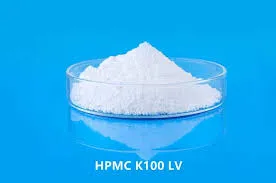
Dec . 01, 2024 09:42 Back to list
hydroxypropyl methyl cellulose hpmc
The Versatility of Hydroxypropyl Methylcellulose (HPMC)
Hydroxypropyl methylcellulose (HPMC) is a non-ionic, cellulose-based polymer that has gained significant attention across various industries, including pharmaceuticals, food, construction, and cosmetics. Its unique chemical properties and multifunctional nature make it an invaluable compound in both commercial and research applications.
Chemical Structure and Properties
HPMC is derived from natural cellulose through a series of chemical modifications, primarily involving hydroxypropyl and methoxy groups
. This modification enhances the solubility and viscosity characteristics of cellulose, rendering HPMC a soluble polymer. Its amphiphilic nature allows it to dissolve in water and organic solvents, making it a versatile additive for numerous formulations.One of the defining features of HPMC is its ability to form gel-like structures when it interacts with water. This property is critical in creating controlled-release drug formulations in pharmaceuticals, ensuring a gradual release of medication into the body. Additionally, HPMC exhibits excellent film-forming abilities, making it suitable for use in coatings and encapsulation processes.
Applications in Pharmaceuticals
In the pharmaceutical industry, HPMC is utilized as a binder, film-former, and emulsifier in various formulations. Its use as a binding agent in tablets and granules enhances the mechanical strength of the dosage forms while providing a uniform distribution of active ingredients. Moreover, HPMC is widely employed in the production of controlled-release formulations, where it regulates the release of drugs over an extended period. This controlled release is especially beneficial in improving patient adherence to medication regimens.
One significant advantage of HPMC in pharmaceuticals is its low toxicity and inertness. This makes it suitable for a variety of therapeutic applications, including those involving sensitive populations. Additionally, HPMC is compliant with regulatory standards, making it a preferred choice for formulators aiming to meet strict safety guidelines.
hydroxypropyl methyl cellulose hpmc

HPMC in Food Products
In the food industry, HPMC serves various functions, including thickening, emulsifying, and stabilizing agents. It plays a crucial role in the production of low-fat and gluten-free products by mimicking the texture and mouthfeel of traditional ingredients. HPMC can also improve the moisture retention of baked goods, ultimately extending their shelf life. Furthermore, it is commonly used in the formulation of vegetarian capsules, offering a plant-based alternative to gelatin capsules.
Construction and Building Materials
The construction industry also benefits from HPMC, particularly in the formulation of cement-based products, adhesives, and coatings. Its water-retention properties prevent premature drying of mortar and plaster, allowing for improved workability and bonding strength. HPMC additions can enhance the performance of construction materials, providing better adhesion and flexibility, crucial for high-quality construction.
Cosmetic Applications
In cosmetics, HPMC is used for its thickening and film-forming properties. It acts as a stabilizer in emulsions, improving the texture and consistency of products like lotions, creams, and gels. Its ability to retain moisture makes it an essential ingredient in moisturizers and anti-aging formulations. Furthermore, HPMC is often included in hair care products to enhance viscosity and provide a pleasant application experience.
Conclusion
The versatility and multifunctionality of hydroxypropyl methylcellulose make it an essential polymer across numerous industries. Its unique properties not only optimize formulations in pharmaceuticals, food, construction, and cosmetics but also contribute to product safety and efficacy. As research advances, the potential applications of HPMC are likely to expand, underscoring its role as a critical ingredient in modern formulations. Whether it’s improving patient outcomes in medication delivery, enhancing the texture of food products, or providing stability in cosmetic formulations, HPMC continues to prove its worth as a vital compound in today’s chemical landscape.
-
Versatile Hpmc Uses in Different Industries
NewsJun.19,2025
-
Redispersible Powder's Role in Enhancing Durability of Construction Products
NewsJun.19,2025
-
Hydroxyethyl Cellulose Applications Driving Green Industrial Processes
NewsJun.19,2025
-
Exploring Different Redispersible Polymer Powder
NewsJun.19,2025
-
Choosing the Right Mortar Bonding Agent
NewsJun.19,2025
-
Applications and Significance of China Hpmc in Modern Industries
NewsJun.19,2025







